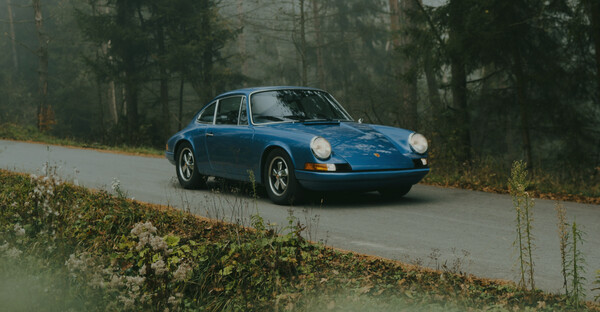Description
Following the success of the SA and VA saloons, the WA, announced in 1938 at the Motor Show, was to be the largest saloon ever produced by Abingdon. The car was similar in shape to the SA with a quite stunning body, but the interior was much more luxurious and the SA's modified powertrain offered more power.
Presumably MG had taken the large saloon concept far enough with the SA and VA models and had moved sufficiently away from the sports car image (with the exception of the TA Midget) to satisfy this sector of the market, but in the summer of 1938 the saloon range was completed with the introduction of the WA or 2. 6 litre saloon. This was an improved SA with a larger engine that used a power unit not seen in any other Nuffield product of the time. The WA was undoubtedly the most luxurious MG ever produced by Abingdon and, although superficially similar to the SA model, the bodywork was far more spacious and much better equipped. The extensive dashboard featured four elegant octagonal instruments with a 100mph speedometer, rev counter, water temperature, oil pressure, fuel gauge, ammeter and electric clock, all incorporated in an attractive oxidised silver frame. Immediately below, grouped around the ignition switch, were rows of switches and indicators for the other functions (windscreen wipers, lights, choke, etc.). The interior was very well finished, with comfortable leather seats and leather door panels with beautiful wood inlays. Ventilation was good thanks to the opening front window and the individual opening of the quarter lights on the doors.
The chassis is similar to that of the SA, with the same wheelbase and front track, but the rear track has been widened by over three inches to improve ride comfort in the rear. The brakes were improved by increasing their diameter from 12 to 14 inches and Kimber suggested that the system would benefit from a Lockheed twin master cylinder due to the weight of the car.
The engine was derived from the SA engine and it was noted that it was one of the first engines to use a fully counterbalanced crankshaft. The engine stroke remained unchanged at 102mm, but the bore was increased from 69mm to 73mm, giving a displacement of 2561cc. With a much higher compression ratio, the engine developed some 20 bhp more than in VA form.
Three body styles were available on the WA chassis when it was announced in the summer of 1938. The saloon sold for £442, a Tickford drophead Coupe was available at £468 and the Charlesworth Tourer could be had for £450 but only nine were produced. Road tests by motoring journals of the time were very rare, but those that were published indicated that the WA performed very similarly to the SA and VA. Acceleration was considered unexciting compared with MG sports cars, but the WA was credited with a good top speed and the ability to maintain high cruising speeds at relatively low revs. Other qualities of the WA included excellent handling, positive steering and effective braking, all of which were essential given the size and weight of the vehicle.
It is estimated that production of the WA Saloon was limited to 265 cars, of which only 34 are still in existence today.
Equipped with a large sunroof, this example was acquired by its current owner in 1990 in Kent, England, where it had spent its entire life, and was then restored over a period of two years:
Refurbishment of the dials and counters
Refurbishment of all the chrome
New interior
It went on to win a number of elegance awards in Belgium. The engine was rebuilt in 2002 (crankshaft, bearings, unleaded cylinder head, etc.).
The paintwork is still original, with some age-related defects but no corrosion. The chassis is sound and the car drives very well.
This MG WA is a unique opportunity to discover the pre-war world in a rare, high-performance car, which thanks to hydraulic brakes, rare for the era, can be driven in today's traffic without apprehension.



















